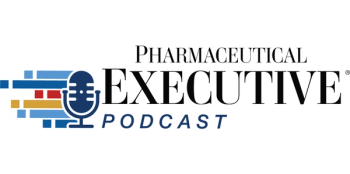Pharma’s Next Commercial Frontier: Orchestrating Data, AI, and CRM for True Customer Centricity
Key Takeaways
- CRM systems must evolve into intelligent networks integrating data, AI, and governance for effective orchestration in pharma.
- Unified data, embedded AI, and strategic governance form the foundation for successful orchestration, enhancing collaboration and trust.
From CRM saturation to commercial orchestration.
Pharma’s commercial playbook is being rewritten. For two decades, CRM systems have been the centerpiece of engagement strategy, designed to bring order to chaos. They organized field visits, recorded calls, and tracked promotional activity. But as customer expectations evolve, CRM alone has reached its ceiling. Healthcare professionals now expect intelligent, timely, and context-rich interactions, not sequences of disconnected messages.
In my work leading transformation programs across healthcare, insurance, and manufacturing, I’ve seen how this shift is accelerating. Commercial leaders are realizing that scaling performance now depends on orchestrating not just managing customer relationships. CRM remains essential, but it must function as part of a living, learning enterprise where data, AI, and governance move in sync.
This new frontier is about orchestration, not instrumentation. The ability to connect information, intelligence, and integrity across every customer-facing function will define the next generation of pharma growth.
Why CRM Alone Cannot Scale the Modern Pharma Model
Pharma’s traditional CRM model was built for a world of predictable launches and stable access channels. That world no longer exists. Field reps now operate in hybrid environments; HCPs engage through a mix of in-person, virtual, and asynchronous channels; and regulators scrutinize every message for precision and intent.
The problem isn’t technology it’s fragmentation. Marketing, medical, and market-access teams often work from different data sources. Territory definitions don’t align with digital campaigns. Metrics measure activity rather than impact. I’ve seen global teams miss critical launch windows simply because insight from one region’s data never reached another’s CRM.
This fragmentation makes it impossible to deliver the unified experience that physicians expect. CRM can record the “what” of engagement but rarely the “why.” Without orchestration across data and functions, field efforts remain tactical, not strategic.
True transformation begins when organizations stop viewing CRM as a system of record and start seeing it as a node in an intelligent network one where data integrity, AI-driven insight, and governance discipline guide every interaction.
The Three-Pillar Framework for Orchestration
From working with multiple regulated enterprises, I’ve seen that every successful orchestration program is built on three pillars: unified data, embedded intelligence, and governance as a growth engine.
Pillar 1: Unified Data and MDM
The foundation of orchestration is trusted, connected data. Pharma operates in one of the most regulated data ecosystems in the world, yet its engagement data is often the least standardized. CRM records capture activities; medical systems store inquiries; compliance tools track approvals but none speak the same language.
Master Data Management (MDM) bridges this gap. A well-implemented MDM program creates a shared taxonomy across HCPs, accounts, products, and territories. It turns fragmented information into an auditable “system of record” for engagement.
In one global program, we consolidated 12 regional CRMs into a single engagement graph. By harmonizing customer hierarchies and mapping them to product portfolios, the company reduced duplicate HCP records by nearly half and achieved real-time visibility into field productivity. Launch readiness improved by more than 25%.
Beyond the metrics, the cultural impact was striking. Teams began speaking the same data language. Medical, marketing, and market-access stakeholders could collaborate around a unified view rather than competing dashboards. When data alignment improves, organizational trust follows.
Pillar 2: Embedded AI
Artificial Intelligence transforms CRM from a passive recorder to an active advisor. Predictive and generative capabilities, when embedded responsibly, turn data into decisions and interactions into insights.
Predictive AI enables precision targeting determining which physicians are most receptive to new product messages or which accounts require access support.
Generative AI complements this by creating contextually relevant summaries and draft communications within the CRM interface.
I’ve seen one commercial team integrate predictive models that analyzed historical detailing data and payer patterns. Within six months, they recorded a 30% improvement in field call prioritization accuracy. When combined with generative content templates approved through automated compliance workflows, field reps could prepare for meetings in minutes rather than hours.
However, AI’s success depends on design. The most advanced models are not those with the highest accuracy, but those built on transparent, explainable logic. Embedding AI within CRM workflows ensures that every recommendation is both actionable and auditable key in a regulatory environment where every decision must be defensible.
AI is no longer a differentiator; it is an amplifier. The differentiator is how responsibly it is used.
Pillar 3: Governance as a Growth Engine
Pharma’s compliance rigor is often perceived as a brake on speed. It can be an accelerator if approached strategically. Governance frameworks define the rules of engagement for data, algorithms, and automation. When done right, they create confidence that enables scale.
In one enterprise transformation, we established an Operational Confidence Index a composite measure combining cycle time, audit readiness, and model explainability. By quantifying trust, the organization was able to measure compliance not as friction but as capability.
We also implemented a “Responsible AI Charter” aligned with MLR (medical, legal, regulatory) review cycles. This charter required documentation of model lineage, bias testing, and performance drift before each quarterly deployment. Far from slowing releases, it reduced approval turnaround by 40% because reviewers trusted the process.
Governance is not bureaucracy. It’s the architecture of trust. The companies that recognize this turn compliance into competitive advantage building systems that regulators respect and stakeholders rely on.
Cross-Industry Lessons: How Other Sectors Got There First
Pharma’s orchestration challenge mirrors those faced by other regulated industries. Insurance, for example, mastered customer orchestration by integrating claims, risk, and behavioral data. Predictive models identify high-risk customers and trigger proactive retention strategies. Success there came not from data abundance, but from alignment between governance and growth metrics.
Manufacturing provides another analogy. Many industrial firms use “digital twins” to simulate equipment performance and predict failures. Pharma can borrow that logic to create Customer Twins dynamic, compliant models that represent how HCPs interact across channels, content, and clinical contexts. A Customer Twin doesn’t expose personal data; it simulates engagement pathways, allowing marketing and medical teams to test strategies before market execution.
Cross-industry learning accelerates innovation because it forces pharma to think systemically. Regulated sectors that learn to blend transparency with agility outperform those that over-optimize one dimension. The lesson is clear: orchestration succeeds when governance and innovation grow together.
Measuring True Impact
Executives often ask what orchestration delivers in measurable terms. The tangible results faster launches, better targeting, and reduced review cycles are critical. Yet, the real transformation is qualitative.
In one company I advised, aligning CRM, data, and AI did more than increase field efficiency. It changed how teams perceived their purpose. Field reps began using insight dashboards not to defend activity counts but to discuss patient access trends with medical counterparts. Compliance officers reported fewer last-minute escalations because review processes were transparent from the start.
We saw a 25–30% acceleration in go-to-market speed, but more importantly, a rise in what I call engagement confidence the belief across teams that their actions were aligned, ethical, and informed. When organizations operate with confidence, every interaction becomes more deliberate, every decision more accountable.
Quantitative metrics prove the investment; qualitative outcomes sustain the culture.
Leadership Behaviors that Sustain Orchestration
Technology can align systems, but only leadership can align intent. Successful orchestration depends on leaders who model the behaviors they want to see across the enterprise. I’ve observed three consistent patterns.
1. Empower cross-functional decisioning.
Traditional hierarchies’ slow innovation. Leaders who delegate authority within clear governance boundaries allow decisions to happen closer to the data. Empowerment builds ownership, and ownership accelerates transformation.
2. Foster transparency between compliance and commercial.
Too often, compliance teams are brought in at the end of a campaign rather than at the beginning. The most advanced organizations create joint design sessions where marketing and legal teams co-create engagement parameters. This doesn’t just improve speed it builds empathy across functions.
3. Build data empathy.
Data empathy means understanding the human stories behind the numbers. Leaders who talk about patients, not pipelines, create alignment between purpose and performance. In one leadership roundtable, I witnessed commercial and medical executives establish a shared vocabulary for “ethical personalization.” That small change improved communication more than any software upgrade could.
In my own work, I’ve seen that these leadership shifts create lasting momentum long after the technology rollout ends. When leaders stay visible, curious, and inclusive, orchestration stops being a program and starts becoming part of how the organization thinks and decides.
What Success Looks Like
When orchestration truly embeds into the enterprise, its success becomes visible across every layer of the organization not as a project milestone, but as a shift in how work gets done.
1. Connected insight
Connected insight goes far beyond dashboards. It means that every team, from field representatives to medical affairs to market access, draws from a single interpretive layer of truth. A territory manager viewing HCP interaction patterns can instantly see compliance notes from regulatory teams and feedback from digital campaigns. In practical terms, this eliminates the “data handoff” delays that once consumed days. More importantly, it enables every function to operate with shared foresight rather than siloed hindsight.
Connected insight also changes behavior. When teams can see cause-and-effect relationships across functions how digital content drives field inquiries, how payer feedback alters messaging they begin to think like orchestrators, not operators. Strategy becomes systemically informed, and leadership can pivot based on real-time intelligence rather than quarterly retrospectives.
2. Adaptive engagement.
Adaptive engagement ensures that every message and channel evolve with the customer, not against them. The most advanced commercial organizations are already using AI-driven engagement graphs that continuously learn from real-world behavior understanding when physicians switch preferences from face-to-face to digital, or when sentiment shifts after new clinical data is released.
This responsiveness doesn’t just improve conversion rates; it strengthens the perception of partnership. When HCPs feel that outreach is timely, relevant, and respectful of their communication patterns, engagement transitions from transactional to collaborative. In my experience, that shift is where trust and differentiation emerge.
3. Transparent governance.
Transparency no longer stops at compliance. Modern governance allows every automated decision to be traceable from insight to action. Imagine being able to show a regulator, within minutes, the lineage of an AI-generated recommendation its data sources, versioned logic, and approval history. That level of clarity transforms compliance from documentation to demonstration.
Transparency also improves internal agility. When teams understand why a rule exists and how it’s enforced, they are more likely to innovate responsibly rather than avoid risk altogether. Transparency, therefore, becomes a leadership tool as much as a regulatory necessity.
4. Sustained innovation.
Sustained innovation occurs when orchestration becomes self-reinforcing. As unified data and responsible AI deliver results, they free up capacity for continuous improvement. Experimentation happens within governed boundaries, and lessons are shared through integrated learning systems.
This creates what I call the resonance effect each function amplifying the other’s strengths. Marketing’s insights enhance medical education strategies; access data informs predictive analytics; compliance feedback strengthens next-cycle AI models. The organization begins to learn as one entity.
Ultimately, success is reflected not only in faster launches or higher engagement but in cultural maturity. Teams move from “managing change” to mastering adaptation. When that mindset takes hold, orchestration is no longer a transformation program it becomes the enterprise’s operating rhythm.
Looking Ahead––Orchestration as the Enterprise Operating Model
The next decade will test how far pharma leaders can push the boundaries of orchestration. Technology is no longer the constraint; governance, integration, and leadership discipline will determine who scales responsibly.
1. CRM dissolves into enterprise intelligence.
Within five years, CRM will be invisible. Its core functions relationship tracking, pipeline visibility, and omnichannel engagement will integrate into an enterprise-wide intelligence layer powered by unified taxonomies. Instead of navigating multiple tools, users will interact through context-aware workspaces that pull in data from every function.
This shift mirrors what happened in finance when ERPs absorbed siloed accounting tools. In pharma, the same evolution is underway. The CRM of the future will not be a destination system it will be an embedded capability inside the enterprise’s data fabric. That’s a radical but necessary simplification.
2. Generative AI becomes the co-pilot of engagement.
Generative AI will fundamentally change how commercial content, field insights, and customer analytics are produced and consumed. It will generate medical summaries, distill compliance checklists, and even suggest next-best conversation points all within governed parameters.
However, the real differentiator will be explainability. The next wave of AI systems will feature built-in transparency layers metadata that shows who trained the model, what data it used, and how bias was mitigated. Leaders who can operationalize this explainability will win both regulator confidence and physician trust.
In practice, I’ve already seen organizations pilot what they call “AI Assist Centers,” where every generative output goes through an automated quality and compliance scoring model before it reaches end users. These initiatives mark the shift from experimentation to institutionalization.
3. Governance evolves into trust architecture.
As regulators intensify focus on AI accountability, governance frameworks will transform into what I describe as a trust architecture a unified system connecting data lineage, algorithmic traceability, and human oversight. This architecture will serve as both a compliance shield and a competitive differentiator.
Companies that can show verifiable decision trails how data flowed from capture to insight to action will enjoy faster partnerships, smoother audits, and higher reputational equity. Over time, this transparency dividend will become as valuable as market share.
4. Leadership redefined for the orchestration era.
The leaders who will thrive in this new environment are those comfortable operating across ambiguity and automation. They will balance empathy with evidence, ensuring that AI decisions always align with ethical principles and patient benefit. Their core skill will be narrative synthesis the ability to connect data, intent, and impact into a coherent story that motivates teams and satisfies regulators.
5. The path forward.
In the coming years, orchestration will evolve from a commercial strategy to an enterprise operating model. The most forward-thinking organizations are already treating it as a continuous capability one that harmonizes scientific rigor, digital intelligence, and human trust.
Those who embrace orchestration early will define not just the next generation of pharma competitiveness, but the next standard of responsible enterprise behavior. And in that world, success will be measured not by how much technology a company deploys, but by how much transparency and trust it creates in every interaction.
From Data to Trust: The New Currency of Growth
Pharma’s next commercial frontier will not be won by the companies with the most advanced tools, but by those that use them most responsibly. Orchestration is the discipline of aligning data, AI, and human judgment to create systems that are intelligent by design and ethical by default.
In my experience, success comes down to mindset. Companies that treat governance as a living capability something to refine, measure, and celebrate build resilience that technology alone cannot provide. Those that focus solely on speed often lose credibility just as quickly.
As data, AI, and compliance continue to converge, one truth stands out: trust compounds faster than technology. The enterprises that master orchestration will not only grow market share but also set the ethical benchmark for the industry.
That is the essence of the new commercial frontier. It is not about managing systems; it is about governing trust. And in an age defined by transparency and transformation, that trust will be pharma’s most asset.
Newsletter
Lead with insight with the Pharmaceutical Executive newsletter, featuring strategic analysis, leadership trends, and market intelligence for biopharma decision-makers.





